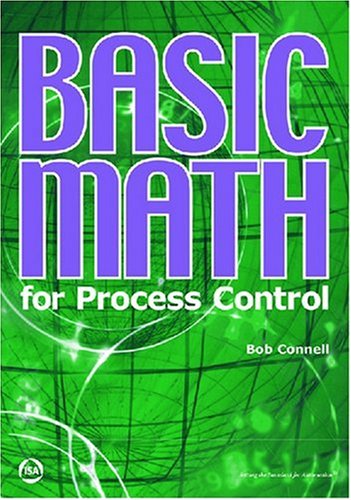Bob Connell1556178131, 9781556178139
Table of contents :
Front Matter……Page 1
Table of Contents……Page 0
Preface……Page 3
Table of Contents……Page 5
1.1 Units of Measurement……Page 8
1.2 Functions of Angles……Page 9
1.4 Quadrants……Page 10
1.5 Frequency of Cycling……Page 12
1.6 Sine of the Sum of Two Angles……Page 14
1.7 Cosine of a Sum……Page 15
1.8 Sine of a Difference Between Two Angles……Page 16
1.10.2 Example 2: sin 2X – sin 2Y……Page 17
1.10.3 Example 3: Radius of the Earth……Page 18
1.10.4 Example 4: The Third Side……Page 19
1.10.5 Example 5: Gain and Phase Lag……Page 20
2. Differential Calculus……Page 22
2.1 Concept of Approaching a Limit……Page 23
2.1.1 Example 1: f(t) = t^2……Page 25
2.2.2 Derivative of a Product……Page 26
2.2.4 Dimensions and Units……Page 27
2.2.6 Binomial Theorem……Page 28
2.2.7 Derivative of a Power……Page 29
2.2.9 A Function within a Function……Page 30
2.2.10 Example 2: Detecting a Maximum or Minimum……Page 31
2.2.11 Example 3: Watering the Lawn……Page 32
3. Integral Calculus……Page 35
3.1 Problem Areas……Page 36
3.2.2 Example 2: sin^3 x……Page 37
3.2.5 Example 5: Fractions……Page 39
3.2.6 Example 6: Using Partial Fractions……Page 40
3.2.8 Example 8: Changing to an Angular Mode……Page 41
3.2.9 Example 9: sin^2 x……Page 42
3.2.10 Example 10: Square Root of (a^2 – x^2)……Page 43
3.3.1 Example 11: Tank Filling Case……Page 45
3.3.3 Example 13: Surface Area of a Sphere……Page 47
3.3.4 Example 14: Volume of a Sphere……Page 49
3.3.5 Example 15: The Escape Velocity……Page 50
3.3.6 Example 16: Area of a Segment of a Circle……Page 51
3.4 Table of Basic Integrals……Page 54
4. Infinite Series……Page 55
4.2 The nth Term……Page 56
4.3 Test for Convergence……Page 57
4.3.2 Example 2: Convergence Test 2……Page 58
4.3.4 Example 4: The (n+1)th Term……Page 59
4.4 Maclaurin’s Series……Page 60
4.4.1 Example 5: e^omegat……Page 62
4.5 Taylor’s Series……Page 64
4.5.1 Example 6: Value of a Sine Function Using Taylor’s Series……Page 65
5.1 Background……Page 67
5.2 Graphical Representation……Page 69
5.3 The Complex Variable……Page 70
5.4 Trigonometric and Exponential Functions……Page 71
5.4.2 Product of Two Complex Quantities……Page 72
5.5 Separating the Real and Imaginary Parts……Page 73
5.5.1 Example 1: Magnitude and Argument of a Complex Expression……Page 74
6.1 Introduction……Page 76
6.3 Definitions……Page 77
6.5 Differential Equations of the First Order and First Degree……Page 79
6.5.2 Category 2: Variables Separable……Page 80
6.5.3 Category 3: Homogeneous Equations……Page 81
6.5.4 Category 4: Linear Differential Equations……Page 83
6.5.5 Example 1: Time Constant……Page 84
6.7 Second Order Linear Differential Equation with Constant Coefficients……Page 85
6.8 The Oscillatory Case……Page 88
6.9 The Constant of Integration……Page 89
6.9.1 Commentary on the Result……Page 90
6.9.2 Example 2: The Spring/Mass System……Page 91
6.10 Units……Page 94
6.11 Partial Differential Equations……Page 96
7.1 History……Page 98
7.2 Transforms of Derivatives……Page 100
7.2.1 Example 2: Time Constant……Page 101
7.2.2 Example 3: Pendulum……Page 102
7.2.3 Example 4: Second Order Linear Differential Equations with Constant Coefficients……Page 105
7.3 The Oscillatory Case……Page 108
7.3.1 Consistency of Results……Page 109
7.3.2 Table of Laplace Transforms……Page 111
8.1 Background……Page 112
8.2 The Bode Diagram……Page 113
8.4 Frequency Response of a Dead Time Element……Page 114
8.5 Combinations of Components……Page 116
8.6 Period of Oscillation……Page 117
8.7 Summary……Page 119
9.1 Background……Page 121
9.3 The Step Input Function……Page 122
9.4 Time Constants……Page 123
9.6 The Value of the Transfer Function……Page 124
9.6.1 Example 1: Time Constant……Page 125
9.6.2 Example 2: Dead Time……Page 126
9.7 Block Diagrams……Page 127
9.8 Conditions for Continuous Oscillation……Page 129
9.10 Evaluating the Closed Loop Transfer Function……Page 131
10.1 Historical……Page 135
10.2 The Z-N Approximation……Page 140
10.4 Values for the Dead Time and Time Constant……Page 145
10.5 Just How Good Is the Approximation?……Page 146
10.6 Making a Process Reaction Curve……Page 147
10.6.1 Example 1: Reaction of a Real Process……Page 151
11.1 True Value……Page 154
11.3 Errors in Combinations of Quantities……Page 155
11.5 Significant Figures……Page 156
11.6 Conversion of Units……Page 158
11.7 Converting Formulas to New Units……Page 160
11.7.1 Example 1: Reynolds Number……Page 162
11.7.2 Example 2: Pressure of a Column of Liquid……Page 164
11.8 The Most Representative Value (MRV)……Page 165
11.9 Predicting Future Values……Page 168
11.10 How Much Confidence in the Most Representative Value?……Page 170
11.11 The Standard Deviation……Page 171
11.12 Curve Fitting……Page 172
C……Page 176
E……Page 178
G……Page 179
M……Page 180
P……Page 181
R……Page 182
T……Page 183
Z……Page 184

Reviews
There are no reviews yet.